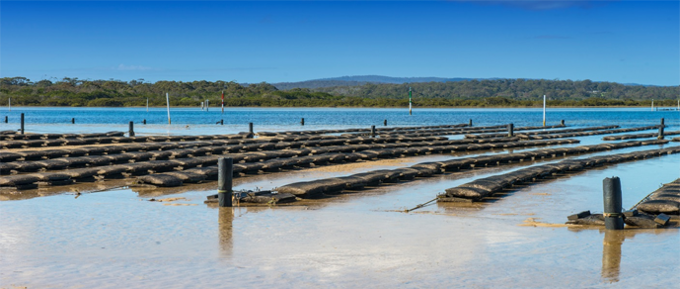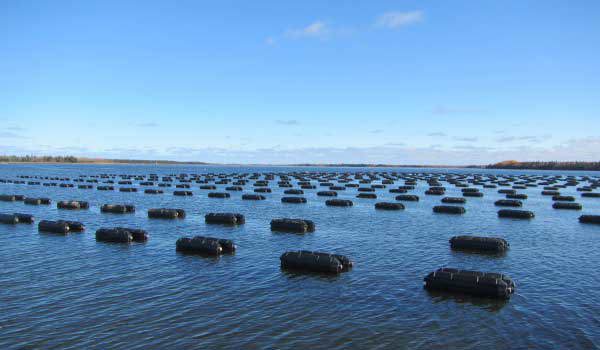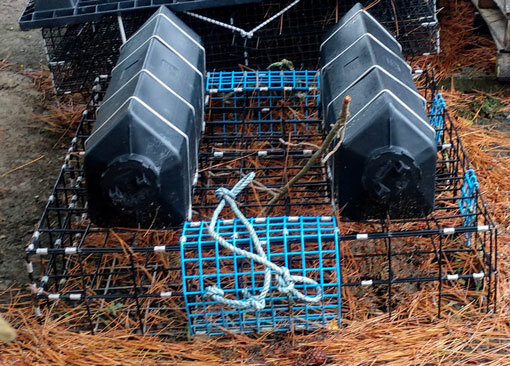
VMRC and Oyster Farms in Virginia - How to get Oyster Leases and More
The intersection of oyster leases and riparian property rights has been a common topic in Virginia over the last few years. The Virginia oyster industry is growing and profitable but conflict results when oystermen seek to install their oyster farming equipment in waters adjoining residential waterfront property. Waterfront property owners pay a premium to live on the water. Oyster aquaculture, particularly "off the bottom" oyster aquaculture, is frequently opposed by waterfront property owners because it may infringe on riparian rights and decrease waterfront property values.
Virginia Works to Promote the Oyster Farm Industry & Protect Waters
Today, Virginia is the largest oyster producer on the East Coast. Our state had its highest oyster yield in decades in 2023, landing 700,000 bushels with a value of $60M (up from $14.5M In 2018). Virginia has invested millions of dollars in oyster restoration and replenishment, and the state has worked to build new reefs. Oyster farming is also a valuable part of Virginia tourism, particularly through the establishment and promotion of the Virginia Oyster Trail.
Oyster farming is not only an important part of the Virginia economy, but it also plays a vital role in improving Virginia's waters. Oysters filter water - stripping out algae and sediment. Oysters also remove nitrogen and phosphorus. The Chesapeake Bay Program has found that excess amounts of these nutrients can fuel the growth of harmful algae blooms. Oyster reefs provide a habitat for other wildlife and can act as breakwaters to protect communities and prevent erosion.

What is an Oyster Lease?
An oyster lease is an agreement between the state and Virginia residents or companies that are at least 60% Virginia owned to cultivate shellfish on grounds of up to 250 acres per application. Oyster leases are issued by the Virginia Marine Resources Commission (VMRC). According to the VMRC, it manages more than 400,000 acres of subaqueous bottomland in the waterways of Virginia.
A substantial portion of this bottomland, some 178,915 acres, known as “Baylor Grounds”, are reserved for oyster harvesting by the general public, as guaranteed by Article XI, Section 3 of the Virginia Constitution. The Baylor Grounds were mapped in a massive two-year survey, begun in 1894, conducted throughout State tidal waters, to locate the naturally productive oyster beds, rocks and shoals. Known as the Baylor Survey, these areas are reserved for public shellfish harvesting and cannot be leased by private parties.
The VMRC's Engineering and Surveying Department surveys and maps oyster grounds, issues leases, and maintains lease records. You should know about oyster aquaculture laws and that practically all of the ideal oyster growing grounds in the state have been leased, leading new entrants to try to lease less desirable ground or grounds that are in more heavily used waters.
How Do You Get an Oyster Lease?
To get an oyster lease, you must fill out an application with the VMRC and submit an application fee. You also must submit an "Oyster Lease Use Plan Questionnaire" form that details what you plan to do. The application is public noticed so others may protest the lease application. If no protest is received in 60 days, a field survey is conducted and the plat is approved by the Chief Engineer. If there is a protest to the application, the VMRC will try to resolve the protest, but if an agreement cannot be reached, a full hearing takes place and a decision is rendered at a VMRC Commission meeting.
Residential waterfront property owners oftentimes object when an application is submitted to lease nearby bottomland. Residential waterfront property owners criticize the oyster aquaculture operation because the equipment is unsightly, which negatively affects the view amenity, and is believed to harm property value. A related concern is that the aquaculture equipment can interfere with vessel navigation, especially when positioned near a channel or in the vicinity of a waterfront property owner’s pier. Although the VMRC is generally unmoved by waterfront property owners who seek to preserve their view of the water, the agency is far more responsive when a waterfront property owner demonstrates that the proposed oyster lease will interfere with navigation rights. The navigation issue is required to be considered by the VMRC, pursuant to Va. Code §28.2-1205 and also by the US Army Corps of Engineers, which is required to deny the permit if the proposed activity will cause more than a “minimal adverse effect on navigation”.
The attorneys on our Waterfront Property Law team routinely represent clients at VMRC Commission meetings. An adverse decision rendered by the VMRC can be appealed to the local Circuit Court and even to the Supreme Court of Virginia.

Oyster Aquaculture: On the Bottom Versus Off the Bottom
There are two types of oyster aquaculture: "on the bottom" and "off the bottom." If you have a lease, you do not need an additional permit to raise oysters on the bottom so long as the cages in which you house your oysters extend no more than 12 inches above the bottom. If you want to use "off the bottom" methods (like floating cages) you need to get an additional permit from the Habitat Management Division at VMRC and the Army Corps of Engineers. The VMRC may need to gather input from the Virginia Department of Environmental Quality, the Virginia Department of Historic Resources, or other state agencies. You initiate the permit application by submitting a completed Joint Permit Application (JPA) to the VMRC, which acts as a “clearinghouse” that facilitates the processing of your application at the various agencies that have jurisdiction. As was true with the lease application, the JPA will be noticed to the public and to Adjacent Property Owners. If these notifications produce one or more objections (the technical term is “protests”), and the VMRC is unable to resolve the protests by mediating among the applicant and the protestor(s), then the applicant will bring the JPA before the VMRC for decision made at a Commission meeting. Our Waterfront Property Law Attorneys routinely represent clients at VMRC Commission meetings. An adverse decision rendered by the VMRC can be appealed to the local Circuit Court and even to the Supreme Court of Virginia.
How a Riparian Lease is Different
Virginia law differentiates between Riparian Oyster-Planting Grounds (Va. Code 28.2-600 to 602) and General Oyster-Planting Grounds (Va. Code 28.2-603 to 605). The Riparian Oyster-Planting Grounds give owners of waterfront property the right to apply for planting grounds provided they own at least 205 feet at the low-water mark. The riparian planting ground can be as big as one-half acre so long as it does not encroach on an existing oyster lease. The General Oyster-Planting Grounds statutes apply to other waters not used for navigation projects and waterfront that is not assigned or reserved for riparian owners.
Pender & Coward, P.C. shareholder, Jim Lang, is an environmental attorney for those who do business, live, work or play on or near the water. He assists waterfront property owners from around the Commonwealth of Virginia in protecting their riparian property rights. Our Waterfront Property Law practice group is well versed in oyster leasing laws, including recent legislative efforts to reform oyster leasing in Virginia.
To learn more about acquiring an oyster lease from the VMRC, contact our experienced team of riparian rights lawyers.
